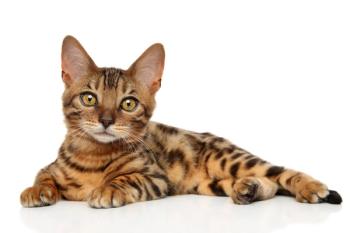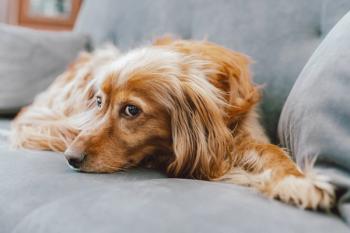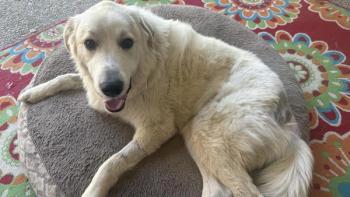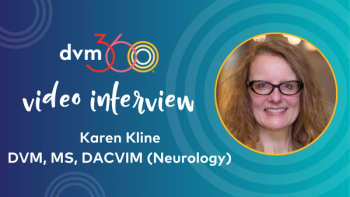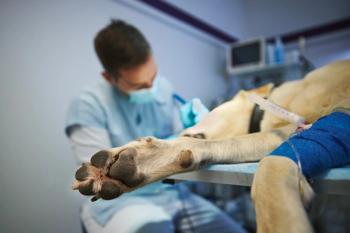
The pediatric neurological examination (Proceedings)
The neurological examination of puppies and kittens can be challenging. Pediatric patients can be uncooperative and their various stages of development lead to different expectations of normalcy compared to adults.
The neurological examination of puppies and kittens can be challenging. Pediatric patients can be uncooperative and their various stages of development lead to different expectations of normalcy compared to adults. Understanding the normal neurologic development of puppies and kittens enhances our ability to identify neurological abnormalities, correctly localize the abnormalities and generate an appropriate list of differential diagnoses.
Signalment and a thorough history are the first part of any examination. Information regarding problematic parturition, affected littermates, health of the parents, feline leukemia virus (FeLV) and feline immunodeficiency virus (FIV) status, nutrition, and vaccination history should be obtained. Time of onset of signs as well as their progression may help to rule in or rule out inherited, developmental, and acquired disorders. Identifying where the patient was obtained may be helpful, because certain animal shelters or regions may have a high incidence of distemper or panleukopenia. Catteries may have a high incidence of feline infectious peritonitis (FIP).1
Puppies and kittens mostly either sleep or nurse during the first two weeks of life. Kittens transition directly from waking to REM sleep2 and may have considerable motor activity during sleep during their first week.3 Until 3 weeks of age EEG patterns in puppies are similar during periods of sleep and waking. EEG patterns become adult like by 8 weeks of age.4
Vestibular function is present at birth and is important during positioning with nursing.5 The head can be raised at birth and may be used to right them self. Initially movement is swim-like with coordination improving to reach the ability to maintain an upright posture at about 10-14 days of age.4 At about 5-6 days of age stepping movements in the thoracic limbs may be made if weight is supported. Pelvic limb steps may be made at 7-10 days with support.6 At 18-21 days of age an uncoordinated gait begins.5 Adult posture and balance develops between 6 and 8 weeks of age. Breed variation does exist.4 Histologically the spinal cord is mature by 6 weeks of age.17 The cerebellum develops until 10 weeks of age.8
Tactile placing reactions begin as early as early as 2 days in the thoracic limb and 5 days in the pelvic limbs,9 however these are not consistent until about 5 weeks of age. Hopping reactions may be detected from 6-8 weeks of age with the thoracic limbs developing first.4,6 Extensor postural thrust can be seen by 12-14 days in puppies10 and 14-16 days in kittens.3
Tonic neck reflexes, the magnus reflex, evaluate cervical tension receptors and can typically be identified by 5-6 days of age. Cervical extension produces thoracic limb extension and pelvic limb flexion. Cervical flexion yields pelvic limb extension. Lateral cervical flexion results in extension of the ipsilateral limb and flexion of the contralateral limb.6 Kittens inhibit tonic neck reflexes. If present in kittens greater than 3 weeks of age an upper motor neuron lesion should be suspected.3
The "seal" reflex is seen when suspended under the chest. It consists of extension of the head, pelvic limb extension and variable posturing of the thoracic limbs.6 The "diving" reflex occurs when held under the chest and rocked backward or forward and consists of raising the head, extending the thoracic limbs and arching the back.4 Both the diving and seal reflexes can be seen at 3 weeks of age.4,6 A normal response to being dropped consists of twisting into an upright position with limb in extension and are seen at 3-4 weeks of age.3,4
Reflexes to protect the eyes develop prior to the eyes actually opening. A dazzle reflex occurs before the retina has developed. The eyes open between 10 and 16 days in the puppy6 and 5 to 14 days in the kitten.3 The menace response can be seen shortly after the eyes open, however may take up to a month to appear.3,5 Kittens may have a divergent strabismus until 8 weeks of age.3 The time of appearance of cranial nerve tests are summarized in table 1.
Table 1: Time to onset of positive cranial nerve tests1
Olfaction (CN I) is present at birth, but is likely poor.5 The suckle response (CN V, VII and XII) is seen within 1-2 days, but can disappear by day 20 in kittens.3 The external ear canals open between 12 to 14 days of age in puppies6,9 and 6 to 14 days in kittens.3 Once open a startle response (CN VIII) can be produces with auditory stimulation.9
Spinal and myotactic reflexes such as the patellar, triceps, gastrocnemius, withdrawal and panniculus reflexes are all present shortly after birth. However these reflexes may be difficult to elicit.4,6 If a crossed extensor reflex persists past 17 days in kittens and 3 weeks in puppies an upper motor neuron lesion is indicated.3,6,9 Stimulation of the perineal reflex may cause urination or defecation typically up to 3 weeks of age.4,7 Examining patients with them as relaxed as possible and positioning them in lateral recumbency can help maximize success in obtaining spinal and myotactic reflexes.
References
Lavely JA. Pediatric Neurology of the dog and cat. Vet Clin Small Anim Pract 2006;36:475-501.
Hart BL. Sleeping behavior. Feline Pract 1977;7:8–10.
Hoskins JD. Clinical evaluation of the kitten: from birth to eight weeks of age. Compend Contin Educ Pract Vet 1990;12(9):1215–25.
Fox MW. Conditioned reflexes and the innate behaviour of the neonate dog. J Small Anim Pract 1963;4:85–99.
Shores A. Neurological examination of the canine neonate. Compend Contin Educ Pract Vet 1983;5(12):1033–41.
Breazile JE. Neurologic and behavioral development in the puppy. Vet Clin North Am Small Anim Pract 1978;8(1):31–45.
FoxMW, Inman OR, HimwichWA. The postnatal development of the spinal cord of the dog. J Comp Neurol 1967;130:233–40.
Schatzberg SJ, Haley NJ, Barr SC, et al. Polymerase chain reaction (PCR) amplification of parvoviral DNA from the brains of dogs and cats with cerebellar hypoplasia. J Vet Intern Med 2003;17:538–44.
Beaver BV. Somatosensory development in puppies. Vet Med Small Anim Clin 1982;77: 39–41.
Kornegay JN. The nervous system. In: Hoskins JD, editor. Veterinary pediatrics dogs andcats from birth to six months. 2nd edition. Philadelphia: WB Saunders; 1995. p. 451–96.
Newsletter
From exam room tips to practice management insights, get trusted veterinary news delivered straight to your inbox—subscribe to dvm360.


